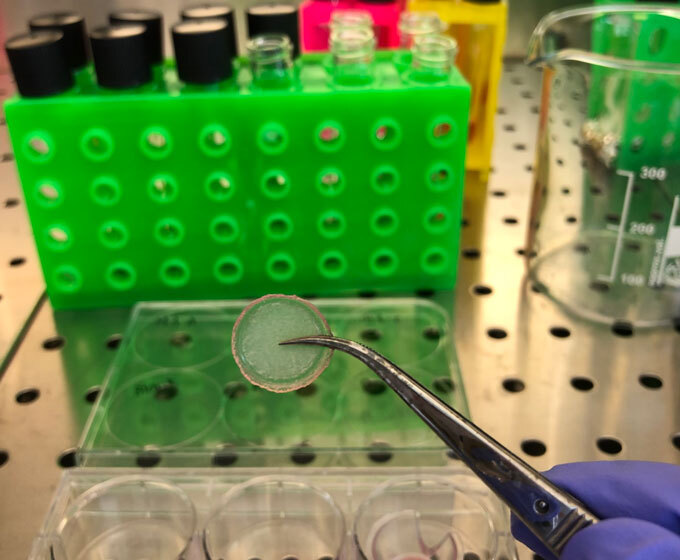Skin appears to be no barrier for some common ‘forever’ chemicals
These PFAS show up in many products that we touch, including cosmetics and waterproof goods

Forever chemicals can show up in everyday products, such as raincoats and umbrellas. A new study suggests they also could enter our skin — and might even reach our bloodstream.
MajaMitrovic/iStock/Getty Images Plus
PFAS — also known as forever chemicals — are thousands of fluorine-rich compounds. And these human-made chemicals can be found everywhere. They’re in school uniforms, food packaging, cosmetics and personal care products. They seep into our food and drinking water. Now research suggests some can also enter our skin.
These new data point to yet another way we can be exposed to the potentially harmful chemicals.
PFAS is short for per- and polyfluoroalkyl (PAH-lee-flooh-roh-AL-kul) substances. They get that “forever” nickname from the almost unbreakable bonds between their carbon and fluorine atoms. Since the 1950s, these chemicals have turned up in everything from nonstick pans to stain- and water-repellent papers and fabrics.

But after broad use for so long, research has begun to show PFAS can be harmful to our bodies. Especially worrisome: They are unlikely to break down. So they’ve been showing up all over the environment.
Environmental chemists at the University of Birmingham in England now show that PFAS can pass through the outer skin layer. That suggests PFAS might be able to get into our bodies and bloodstream.
Oddný Ragnarsdóttir, Stuart Harrad and Mohamed Abdallah shared their new findings in the June Environment International.
Can PFAS skin exposures lead to blood uptake?
For their new study, the team studied 17 PFAS. They chose to study ones found in products that can come into contact with our skin. In the lab, the team dissolved each chemical in an alcohol. Then they applied a tiny amount of each chemical — 500 billionths of a gram per square centimeter — to samples of tissue made from lab-grown human skin cells.
After 36 hours, 11 of the 17 PFAS had crossed the outer, barrier layer of skin. PFAS with only four to seven carbon atoms entered more readily than those with more carbon atoms.
The researchers also measured how much of each PFAS stayed in the skin — and how much had never been absorbed. Roughly 59 percent of one PFAS (PFPeA ) and 49 percent of another (PFBS) entered the skin. In fact, each reached a fluid beneath the skin — one used as a stand-in for the bloodstream.

These shorter PFAS had been developed as safer alternatives to the original forever chemicals. As these findings show, the newer ones, too, may be a problem.
“We cannot say with 100 percent certainty that [PFAS] will end up in the bloodstream,” says Ragnarsdóttir (who now works at the University of Iceland in Reykjavik). “But they have still managed to enter the skin,” she says. And that “is the first step in the process of [skin entry].”
Her team’s tests used a model of human skin. But it might not have behaved exactly as intact skin will, notes Miriam Diamond, who was not involved in the study. She’s an environmental scientist in Canada at the University of Toronto. Our skin is thicker in some places, she explains, such as the soles of our feet. It’s thinner in others, such as over our genitals. So absorption may differ greatly depending on where a PFAS touches the skin.
What’s more, Ragnarsdóttir notes, her team used doses that were higher than people would normally encounter. (That dose had been picked to more easily track the movement of the chemicals.)
Even so, she says, people need to take note of whether their clothing and the personal care products they use on their skin contain PFAS. “We wear our clothes for hours during the day,” Ragnarsdóttir says. “So if you’re wearing something with PFAS, it’s a source of exposure.”
Most people in the United States are exposed to PFAS through food packaging, indoor dust and tainted drinking water. The U.S. Environmental Protection Agency became so concerned about PFAS levels in drinking water that in June 2022 it set limits to help cut those exposures.
Past research had suggested skin might be a possible route of PFAS exposure, too. But there had been few data on this. One study, for instance, showed a PFAS could enter rat skin. But “the skin of a rat does not [precisely] mimic human skin,” notes Harrad on the Birmingham team. That, he says, is why this new study has long been needed.







